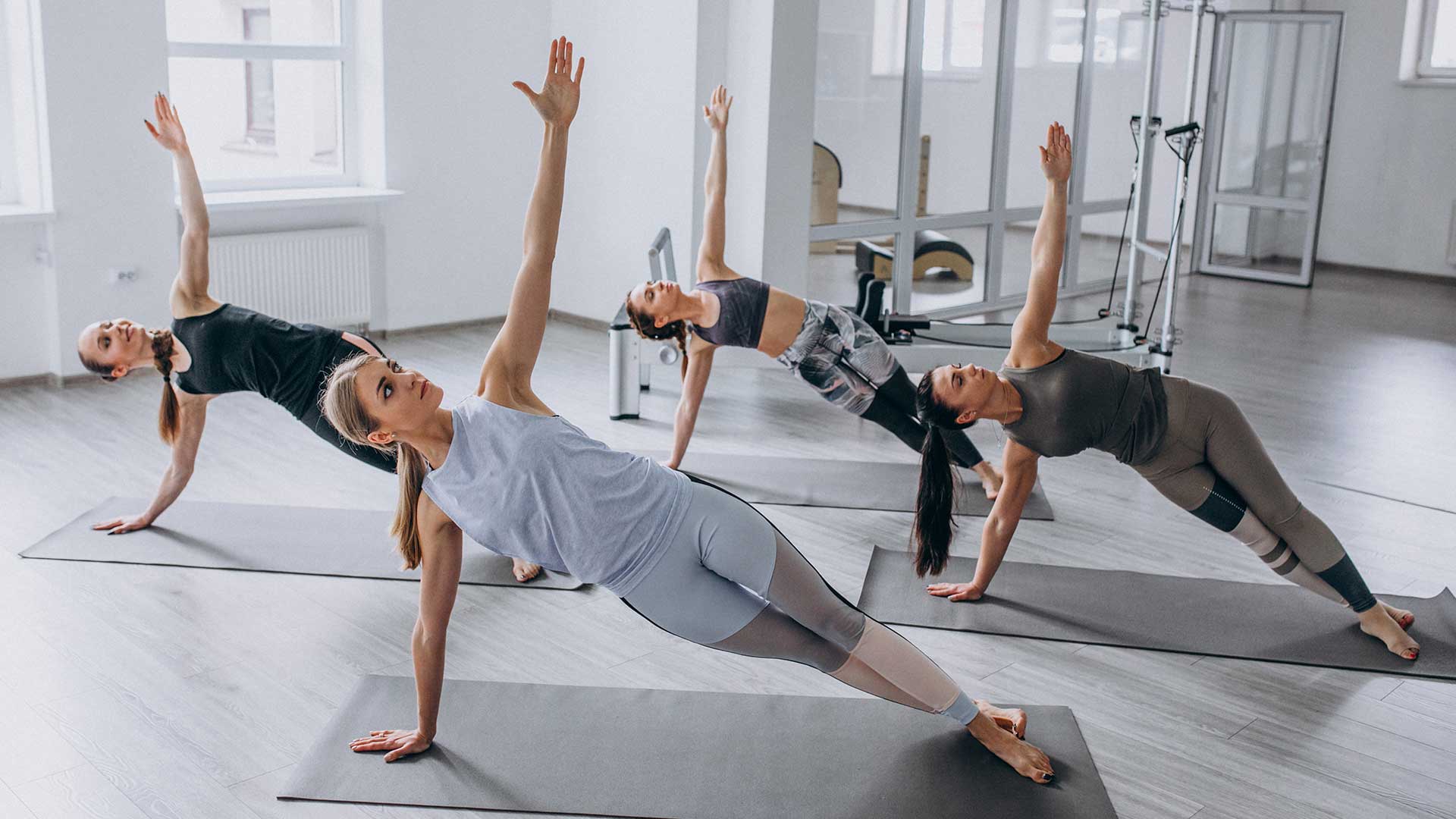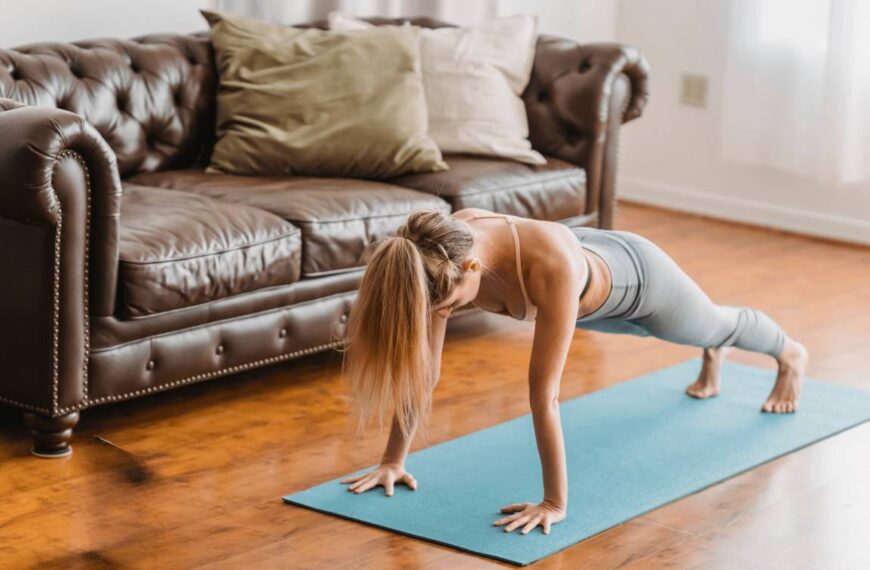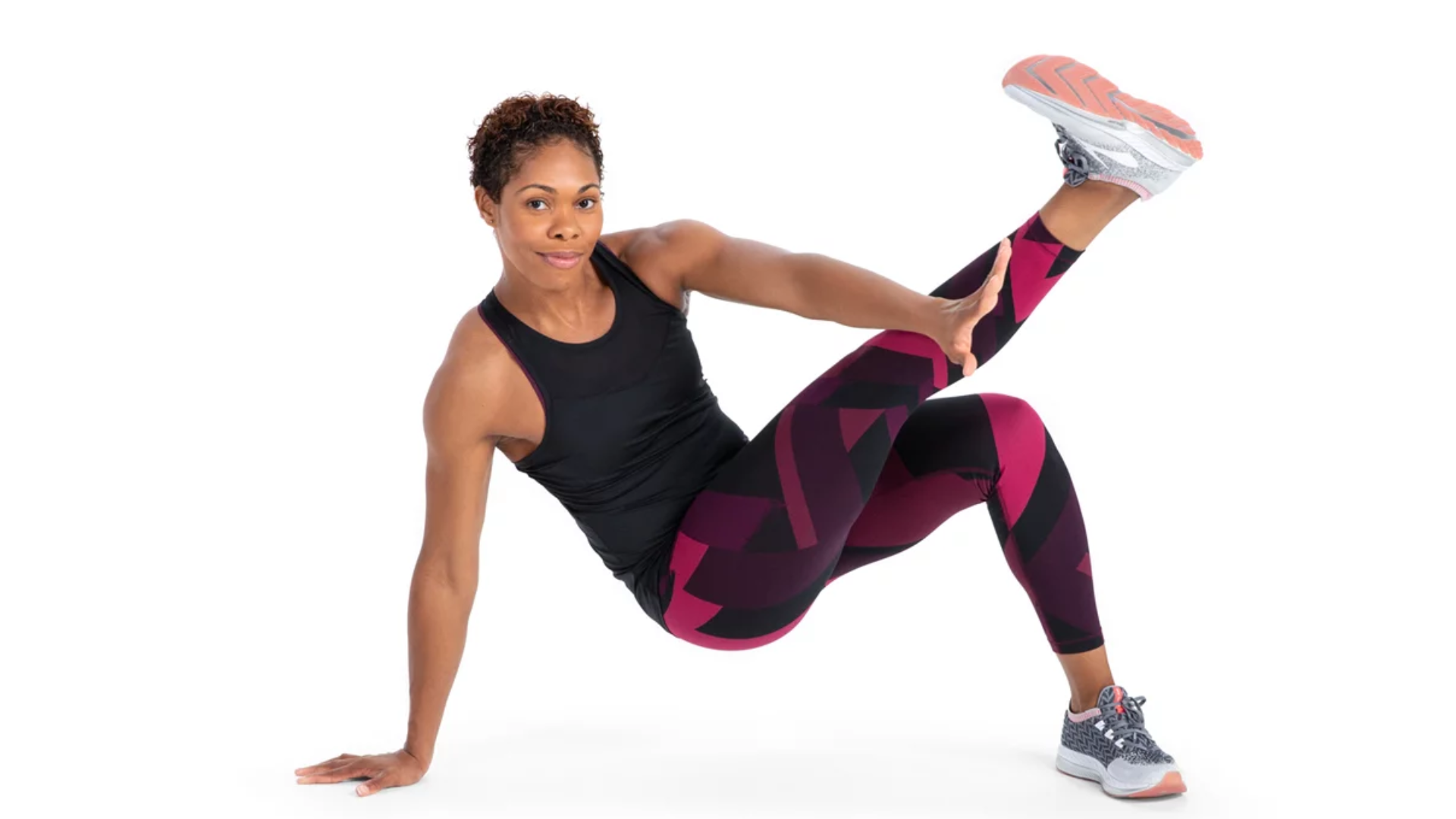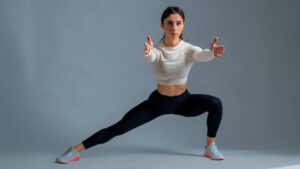Differences between Pilates versus Yoga
Regarding low-impact exercise and wellness, Pilates and Yoga are often mentioned in the same breath. However, Pilates versus Yoga is a debate that has been ongoing for years. While both practices have their unique benefits, some differences set them apart from each other.
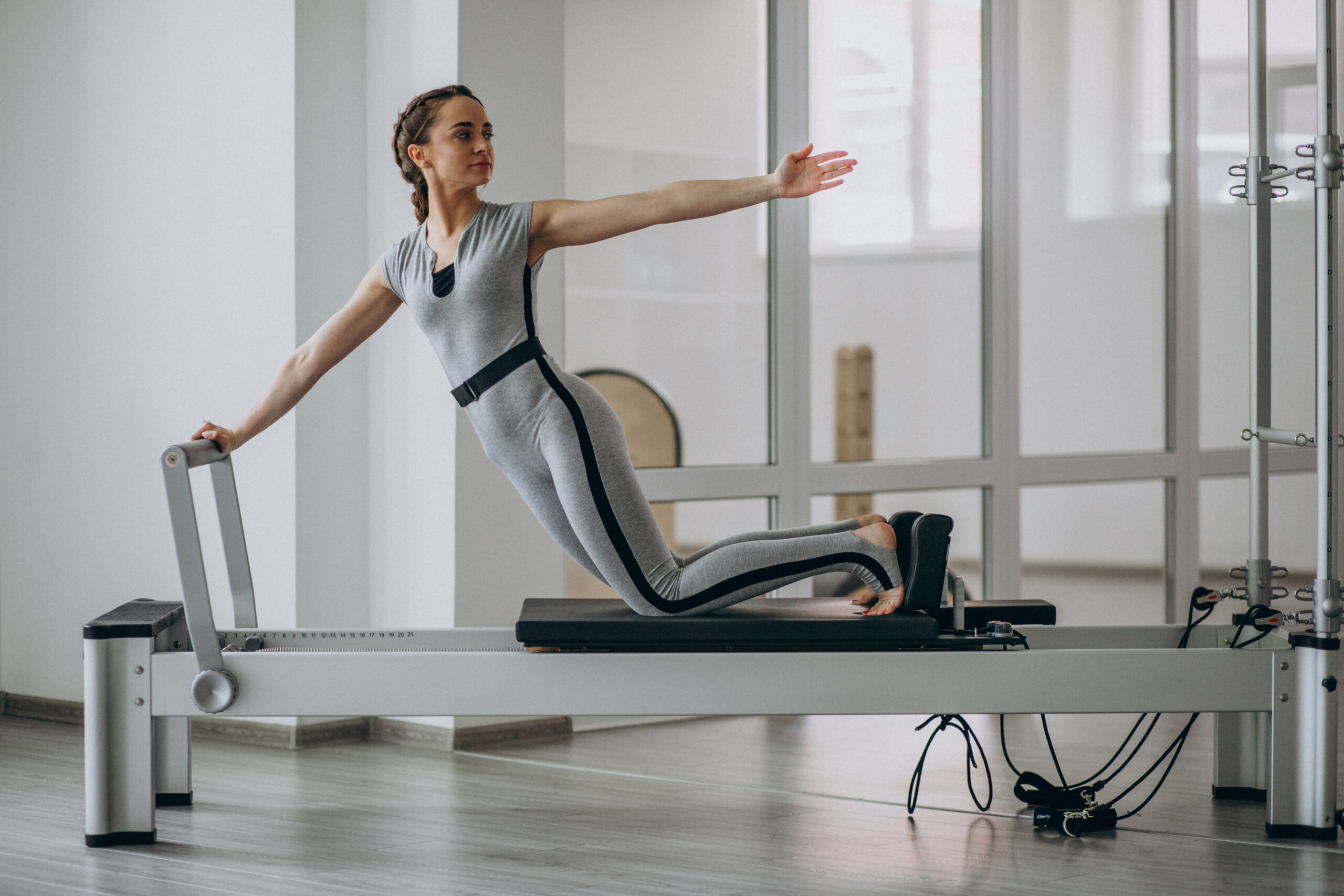
Movements
One of the most significant differences between the two practices is the type of movements involved. Pilates focuses on movements that challenge the core, such as moving the arms or legs while maintaining stability in the core. In contrast, Yoga involves holding or flowing into positions that stretch and strengthen the body.
Approach
Another difference between the two is their approach. Pilates is a physical fitness system focusing on specific exercises to improve strength, flexibility, and posture. Its primary goal is to create a stable and strong core, essential for supporting the spine and reducing the risk of injury. Yoga, on the other hand, is a holistic discipline that emphasizes the physical, mental, and spiritual aspects of well-being. It has been around for over 5,000 years and is rooted in ancient Indian philosophy.
Focus
The focus of the two practices also differs. Pilates is all about building and maintaining core strength and stability through slow, precise movements that require breath control. Yoga, on the other hand, focuses on posture, breathing, and meditation, with an emphasis on mindfulness and relaxation.
Equipment
Pilates and Yoga also vary in the type of equipment used. Pilates moves can be done on a mat without any special equipment, but it can also be performed on machines like the Reformer, Cadillac, and Wunda Chair. Yoga, on the other hand, doesn’t require any equipment, but the use of props like blocks, straps, and bolsters is common.
Benefits of Pilates
Pilates provides numerous benefits, both physical and mental. It is an excellent low-impact exercise that people of all ages and fitness levels can do. Here are some of the benefits of Pilates:
Physical Benefits
Core Strength
Pilates is an effective way to build core strength. It focuses on small movements that use stabilizing muscles, which help to strengthen the deep abdominal muscles, back muscles, and pelvic floor muscles. A strong core is essential for good posture, balance, and stability.
Flexibility
Pilates movements are designed to increase flexibility and range of motion. Pilates exercises involve a series of stretches and movements that target various muscle groups, helping to increase flexibility and prevent injury.
Posture
Pilates is known for improving posture. The exercises focus on the muscles that support the spine, which can help to correct poor posture and prevent back pain.
Balance
Pilates exercises help to improve balance by strengthening the muscles that support the body. Improved balance can help to prevent falls, especially in older adults.
Rehabilitation Benefits
Back Pain
Pilates is an effective way to alleviate back pain. It strengthens the muscles that support the spine, which can reduce the pressure on the discs and nerves in the back.
Joint Pain
Pilates can also be beneficial for people with joint pain. The low-impact exercises are gentle on the joints and can help to improve flexibility and reduce pain.
Arthritis
Pilates can also be a helpful exercise for people with arthritis. The gentle movements can help to improve range of motion and flexibility, which can reduce pain and stiffness.
Mental Benefits
Stress Relief
Pilates can help to reduce stress and anxiety. The exercises require concentration and focus, which can help to clear the mind and improve mental well-being.
Improved Concentration
Pilates requires concentration and focus, which can help to improve cognitive function and mental clarity.
Better Sleep
Pilates can also help to improve sleep quality. The exercises promote relaxation and can help to reduce stress, which can improve sleep patterns.
Benefits of Yoga
Yoga is another low-impact exercise that provides numerous benefits, both physical and mental. Here are some of the benefits of Yoga:
Physical Benefits
Flexibility
One of the most significant benefits of Yoga is improved flexibility. Yoga poses help to stretch and lengthen the muscles, which can improve flexibility and range of motion.
Strength
Yoga also helps to improve strength. The poses require the body to support its weight, which can help to build muscle and increase overall strength.
Balance
Yoga can also help to improve balance. The poses require the body to maintain balance, which can help to strengthen the muscles that support the body and prevent falls.
Cardiovascular Health
Yoga can also be beneficial for cardiovascular health. Some forms of yoga, such as Vinyasa and Power Yoga, are more vigorous and can help to improve cardiovascular fitness.
Rehabilitation Benefits
Back Pain
Yoga can be an effective way to alleviate back pain. The poses can help to stretch and strengthen the muscles that support the spine, which can reduce pain and prevent future injury.
Joint Pain
Yoga can also be helpful for people with joint pain. The low-impact poses are gentle on the joints and can help to improve flexibility and reduce pain.
Arthritis
Yoga can also be beneficial for people with arthritis. The gentle movements can help to improve range of motion and flexibility, which can reduce pain and stiffness.
Mental Benefits
Stress Relief
Yoga is known for its stress-relieving benefits. The combination of physical movement and mindfulness can help to reduce stress and anxiety.
Improved Emotional Well-being
Yoga can also help to improve emotional well-being. The practice emphasizes self-awareness and self-acceptance, which can lead to improved self-esteem and a more positive outlook on life.
Increased Mindfulness and Focus
Yoga requires concentration and focus, which can help to improve mindfulness and focus. The practice can help to improve cognitive function and mental clarity.
Which One is Right for You?
Deciding whether to practice Pilates or Yoga can be challenging. Both practices offer numerous benefits, and the best choice depends on individual fitness goals, preferences, and physical limitations. Here are some factors to consider when deciding which one is right for you:
Fitness Goals
The first thing to consider is your fitness goals. If you’re looking to improve core strength, stability, and posture, then Pilates may be the right choice for you. If you’re looking to improve flexibility, balance, and cardiovascular fitness, then Yoga may be the better option.
Physical Limitations
It’s important to consider any physical limitations you may have. If you have back pain or joint pain, Pilates may be a better option as it is a low-impact exercise that can help to alleviate pain and prevent future injury. If you have limited mobility or flexibility, Yoga may be a better option as the poses can be adapted to suit individual needs.
Preferences
Your personal preferences should also be taken into account. If you prefer a more structured and focused approach to exercise, then Pilates may be the right choice for you. If you prefer a more holistic and spiritual approach, then Yoga may be the better option.
Combination
It’s also worth considering combining both practices for a well-rounded fitness routine. Pilates and Yoga complement each other well and can provide a balanced workout that targets physical and mental well-being.
Instructor
Finally, it’s important to find a qualified and experienced instructor who can guide you through the practice safely and effectively. A good instructor can help to tailor the practice to suit your individual needs and ensure that you are performing the exercises correctly to avoid injury.
Which One Burns More Calories?
Regarding burning calories, both Pilates and Yoga are low-impact exercises that may not burn as many calories as more vigorous exercise like running or high-intensity interval training (HIIT). However, both practices can still provide a good calorie burn. Here’s a breakdown of which one burns more calories:
Pilates
Pilates is a low-impact exercise that focuses on small, controlled movements that target specific muscle groups. While Pilates may not burn as many calories as vigorous exercise, it can still provide a good calorie burn, especially if done at a high intensity. According to Harvard Health Publishing, a 155-pound person can burn around 240 calories in an hour-long Pilates session.
Yoga
Yoga is also a low-impact exercise that can provide a good calorie burn. The number of calories burned during a yoga session depends on the type of yoga practised and the intensity of the practice. According to Harvard Health Publishing, a 155-pound person can burn around 240 calories in an hour-long Hatha yoga session, a more gentle form of yoga. More vigorous forms of yoga, like Vinyasa or Power Yoga, can burn more calories.
Which One is Better for Weight Loss?
Regarding weight loss, the most important factor is creating a calorie deficit, which means burning more calories than you consume. While both Pilates and Yoga can help to burn calories and create a calorie deficit, neither practice is a magic bullet for weight loss.
To lose weight, it’s important to combine regular exercise with a healthy diet and lifestyle. Pilates and Yoga can be effective components of a weight loss program, but they should be combined with other forms of exercise like cardio and strength training for optimal results.
Final Thoughts
Pilates and Yoga are low-impact exercises that offer numerous benefits for physical and mental well-being. The best choice depends on individual fitness goals, preferences, and physical limitations. Here are some key takeaways:
- Pilates focuses on core strength, stability, and posture, while Yoga focuses on flexibility, balance, and mindfulness.
- Both practices offer numerous benefits, including improved physical and mental health, rehabilitation benefits, and stress relief.
- The best choice depends on individual fitness goals, preferences, and physical limitations.
- It’s important to find a qualified and experienced instructor who can guide you through the practice safely and effectively.
- Combining both practices can provide a well-rounded fitness routine that targets physical and mental well-being.
At Strong Workouts, we offer many articles and resources to help you achieve your fitness goals. Check out our other great content to learn about fitness, nutrition, and wellness.
Answers To Common Questions
Question: Who is Pilates best suited for, and who is Yoga best suited for?
Answer: Pilates is best suited for those looking to improve core strength, stability, and posture, while Yoga is best suited for those looking to improve flexibility, balance, and mindfulness.
Question: What are the similarities between Pilates and Yoga?
Answer: Both Pilates and Yoga are low-impact exercises that offer numerous benefits for physical and mental well-being.
Question: How do I decide which one to do, Pilates or Yoga?
Answer: The best choice depends on individual fitness goals, preferences, and physical limitations. It’s important to consider all of these factors before making a decision.
Question: What are the benefits of combining Pilates and Yoga?
Answer: Combining both practices can provide a well-rounded fitness routine that targets both physical and mental well-being.
Question: How can I avoid injury when practising Pilates or Yoga?
Answer: It’s important to find a qualified and experienced instructor who can guide you through the practice safely and effectively.
Question: What if I have physical limitations? Can I still practice Pilates or Yoga?
Answer: Both practices can be modified to suit individual needs and physical limitations. It’s important to consult with an instructor and modify workouts to avoid injury.
